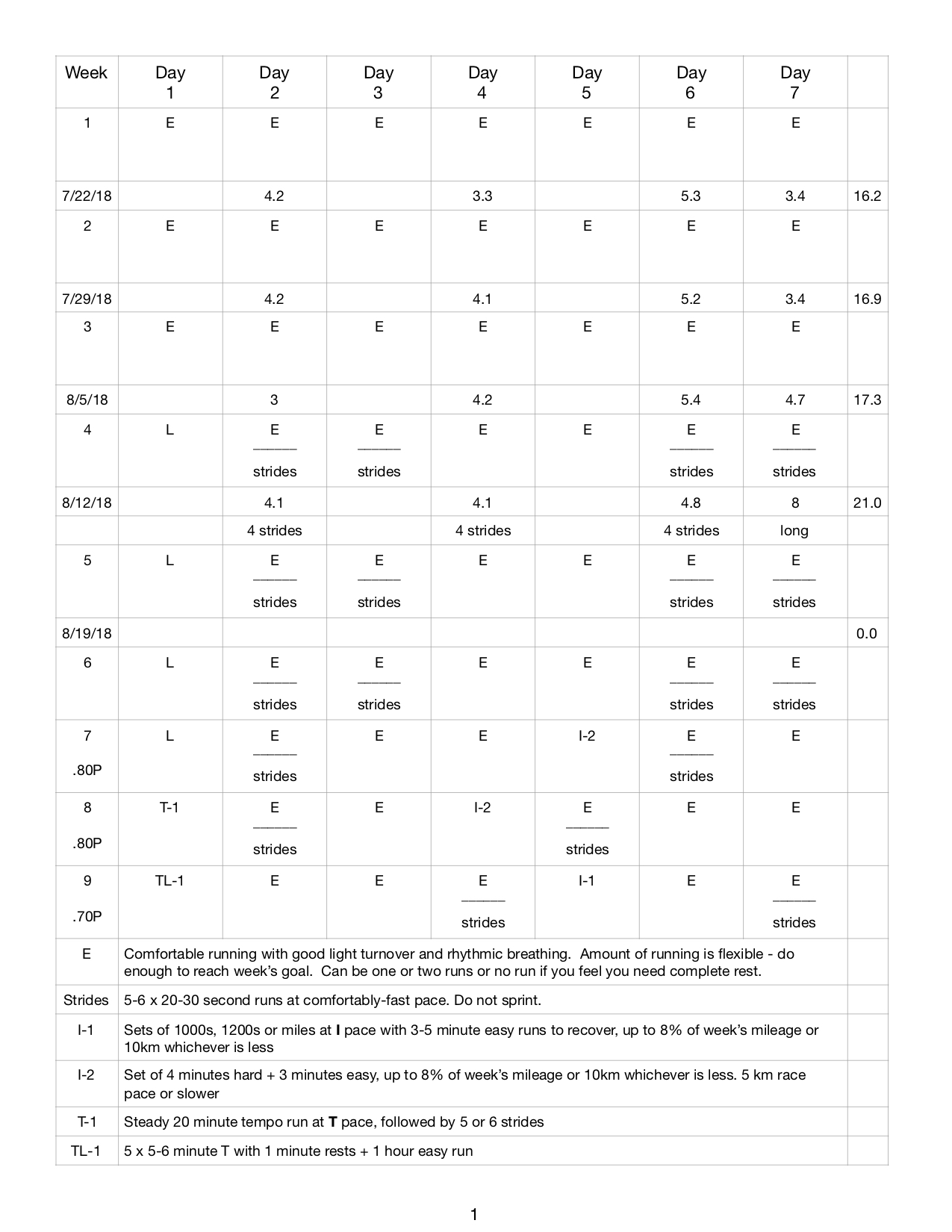Shoulder Surgery -> Marathon Plan
03/05/18 07:53
During my surgery recovery, I planned training for a marathon
May 3 I had surgery to repair my left shoulder rotator cuff. Two tears and a nearly severed biceps tendon. Unlike surgery for this shoulder in 2009, this was arthroscopic and much less painful.
My friend Tom ran his 49th consecutive Boston Marathon this year, and will run his 50th next year. A lit of Syracuse people are talking about a secret plan to travel and watch him run it next year. AS a good friend, I think it would be more fitting to run it with him.
I need a 4:10 marathon to qualify. No one thinks I can do that. No one thought I could run 3:20 to qualify in 1995, and I did. The most I can do this year is to try. Even if I qualify I might not get in, so, as long as I do my best to try to run 4:10, well, that is all I can do.
I dug out my Jack Daniels Running book and began refreshing my memory. I had been running an average of 16.8 miles per week prior to the surgery. In view of a 6 week layoff after the surgery before the surgeon would let me start running again, I figured I would base my 24 week plan on starting out at 4 4-miles runs per week, 16 miles per week. Daniels says you should only increase your running every 3 weeks, and by no more than 1 mile for each run per week. So, after 3 weeks, I can increase by 4 miles and run 20 miles per week for 3 weeks.
During the first 3 weeks of the plan, I struggled to get in 4 runs each week. The weather here has been horrifically hot, even for Arizona. I did end up getting the following results for weeks 1-3:

As you can see, I've estimated my current VDOT as 34. This calls for an E (easy) pace of 11:09 per mile. My actual average pace for the 50.36 miles was 11:03, so I guess I stayed pretty close to the plan.
The plan for weeks 4-7, the rest of Phase I, was to increase mileage by 4 miles per week, so 20 miles per week, in 4-5 runs. This phase adds L (long) runs. I decided to make a long run of 8 miles, I could then run either 3 more 4 mile runs, or 4 more 3 mile runs. The big problem is finding time to get in 8 miles at 11:00 pace, or 90 minutes, running, when the temperature at its lowest is between 6-7 in the morning. When the temps are in the 110s - 120s here as they are nearly every day, and drop only to 88-90 overnight, the constant high dew point kind of smothers you. Dreading a scheduled 8 mile run, even in 90s, with dew points above 70, is no way to get a good night's sleep.
My friend Tom ran his 49th consecutive Boston Marathon this year, and will run his 50th next year. A lit of Syracuse people are talking about a secret plan to travel and watch him run it next year. AS a good friend, I think it would be more fitting to run it with him.
I need a 4:10 marathon to qualify. No one thinks I can do that. No one thought I could run 3:20 to qualify in 1995, and I did. The most I can do this year is to try. Even if I qualify I might not get in, so, as long as I do my best to try to run 4:10, well, that is all I can do.
I dug out my Jack Daniels Running book and began refreshing my memory. I had been running an average of 16.8 miles per week prior to the surgery. In view of a 6 week layoff after the surgery before the surgeon would let me start running again, I figured I would base my 24 week plan on starting out at 4 4-miles runs per week, 16 miles per week. Daniels says you should only increase your running every 3 weeks, and by no more than 1 mile for each run per week. So, after 3 weeks, I can increase by 4 miles and run 20 miles per week for 3 weeks.
During the first 3 weeks of the plan, I struggled to get in 4 runs each week. The weather here has been horrifically hot, even for Arizona. I did end up getting the following results for weeks 1-3:

As you can see, I've estimated my current VDOT as 34. This calls for an E (easy) pace of 11:09 per mile. My actual average pace for the 50.36 miles was 11:03, so I guess I stayed pretty close to the plan.
The plan for weeks 4-7, the rest of Phase I, was to increase mileage by 4 miles per week, so 20 miles per week, in 4-5 runs. This phase adds L (long) runs. I decided to make a long run of 8 miles, I could then run either 3 more 4 mile runs, or 4 more 3 mile runs. The big problem is finding time to get in 8 miles at 11:00 pace, or 90 minutes, running, when the temperature at its lowest is between 6-7 in the morning. When the temps are in the 110s - 120s here as they are nearly every day, and drop only to 88-90 overnight, the constant high dew point kind of smothers you. Dreading a scheduled 8 mile run, even in 90s, with dew points above 70, is no way to get a good night's sleep.